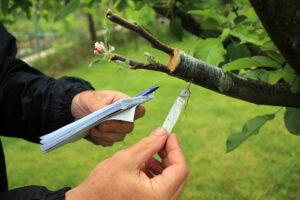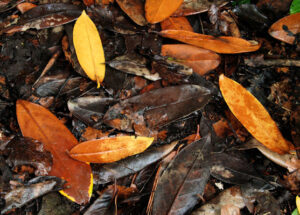How Can Trees Be Protected in the UK?
The United Kingdom’s verdant landscape is defined by its majestic trees, from ancient oaks that have witnessed centuries of history to urban saplings that clean our city air. Trees are not merely aesthetic additions to our environment; they are critical ecological assets that provide habitats for wildlife, combat climate change, prevent flooding, and enhance human wellbeing. Yet, despite their immense value, UK trees face unprecedented threats from development, disease, climate change, and neglect.
You might wonder why tree protection matters so urgently in the modern UK. Consider this: a mature oak can support over 2,300 species of wildlife and absorb approximately 1 tonne of carbon dioxide over 40 years. The UK has one of the lowest woodland coverage rates in Europe at just 13%, compared to an average of 37% across the EU. Every tree lost represents an ecological deficit that can take decades to replace.
This comprehensive guide explores the multifaceted approaches to tree protection in the UK, from legal frameworks to community initiatives, and provides practical advice on how you can contribute to safeguarding this precious natural resource for future generations.
The Legal Framework for Tree Protection in the UK
Understanding the legal protections for trees is essential if you want to effectively advocate for their preservation. In the UK, several key legislative tools exist to protect trees from unnecessary damage or removal.
Tree Preservation Orders (TPOs)
Tree Preservation Orders are perhaps the most significant legal protection mechanism for trees in the UK. Issued by local planning authorities, TPOs make it an offense to cut down, top, lop, uproot, willfully damage, or willfully destroy a protected tree without permission. The penalties for violating a TPO can be substantial, with fines of up to £20,000 for destroying a protected tree.
You should know that TPOs can apply to individual trees, groups of trees, or entire woodlands. According to data from the Forestry Commission, approximately 2 million trees in England alone are protected by TPOs, though this represents only a fraction of the nation’s trees.
To check if a tree is protected by a TPO, you can contact your local council or use their online planning portal. The government provides guidance on TPOs through the Planning Portal: Tree Preservation Orders and trees in conservation areas.
Conservation Areas
If you live in or near a conservation area, additional tree protections apply. Trees in conservation areas that exceed 7.5cm in diameter (measured at 1.5m above ground level) are automatically protected, even without a specific TPO. You must give your local planning authority six weeks’ notice before carrying out work on these trees, allowing time for the authority to consider placing a TPO if warranted.
The UK has over 10,000 conservation areas, covering historical town centers, villages, and other areas of special architectural or historical interest. These designations help preserve the character of these regions, with trees often playing a crucial role in defining that character.
Ancient Woodland Protection
Ancient woodlands—areas that have been continuously wooded since at least 1600 in England and Wales, or 1750 in Scotland—receive special consideration in the planning system. These irreplaceable habitats house unique ecosystems that have developed over centuries, making them particularly valuable conservation assets.
The National Planning Policy Framework (NPPF) provides strong protection for ancient woodlands and veteran trees, stating that development resulting in their loss should be refused unless there are “wholly exceptional reasons” and a suitable compensation strategy exists. You can find further details on the government’s approach to ancient woodland protection on the Forestry Commission website.
Felling Licenses
For trees outside gardens, a felling license from the Forestry Commission is typically required before cutting down trees. This applies when felling more than 5 cubic meters of timber in a calendar quarter, with exemptions for trees in certain locations or below specified sizes.

The table below outlines the key legal protections for trees in the UK:
| Protection Mechanism | Governing Body | Coverage | Penalties for Violation |
|---|---|---|---|
| Tree Preservation Orders (TPOs) | Local Planning Authorities | Individual trees, groups, or woodlands of amenity value | Up to £20,000 fine or twice the value of the timber (whichever is higher) |
| Conservation Area Protection | Local Planning Authorities | All trees over 7.5cm diameter in designated conservation areas | Up to £20,000 fine |
| Ancient Woodland Protection | National Planning Policy | Woodlands continuously wooded since 1600 (England/Wales) or 1750 (Scotland) | Planning restrictions and potential requirement for compensation |
| Felling Licenses | Forestry Commission | Trees outside gardens where felling exceeds 5 cubic meters per quarter | Up to £2,500 fine or twice the value of the timber |
Tree Diseases and Pests: Major Threats to UK Trees
The health of UK trees faces mounting challenges from both indigenous and invasive pests and diseases. Understanding these threats is crucial for effective protection strategies.
Ash Dieback: A National Crisis
Ash dieback (Hymenoscyphus fraxineus) represents one of the most severe tree disease epidemics in the UK’s recent history. First identified in the UK in 2012, this fungal disease has spread rapidly across the country, affecting the UK’s 150 million ash trees. The disease causes leaf loss, crown dieback, and ultimately tree death, with young trees particularly vulnerable.
The economic impact of ash dieback is staggering. Research from the University of Oxford estimates the cost to the UK at £15 billion over the next 100 years, considering factors such as lost ecosystem services, tree removal costs, and reduced property values. Approximately 80% of ash trees in the UK are expected to succumb to the disease eventually.
You can help monitor the spread of ash dieback by reporting suspected cases to the Forestry Commission through their Tree Alert service. The government provides guidance on managing ash dieback at: Managing ash dieback in England.
Oak Processionary Moth
The oak processionary moth (Thaumetopoea processionea) poses a dual threat—to oak trees through defoliation and to human health through its irritating hairs that can cause skin rashes and respiratory problems. Native to southern Europe, this pest was accidentally introduced to England in 2005 and has since established populations primarily in London and surrounding areas.
Control efforts focus on surveillance, pheromone trapping, and targeted treatment of affected trees. If you spot oak processionary moth nests—distinctive silken webbing on oak tree trunks or branches—you should report them immediately to the Forestry Commission and avoid direct contact.
Acute Oak Decline
Acute Oak Decline (AOD) affects mature oak trees, particularly those over 50 years old. Characterized by stem bleeding, cracks in the bark, and rapid decline, AOD is thought to involve multiple factors, including bacterial infections and the oak jewel beetle (Agrilus biguttatus). The condition has been observed primarily in central and southern England.
Research into AOD is ongoing, with scientists from Forest Research leading investigations into its causes and potential treatments. Early detection is vital for monitoring purposes, even though treatment options remain limited.
The table below summarizes the major tree diseases and pests affecting UK trees:
| Disease/Pest | Affected Species | Symptoms | Current Distribution | Management Approaches |
|---|---|---|---|---|
| Ash Dieback | Ash (Fraxinus excelsior) | Leaf loss, crown dieback, diamond-shaped lesions on stems | Nationwide | Monitoring for resistant trees, removal of hazardous trees, replanting with diverse species |
| Oak Processionary Moth | Oak (Quercus species) | Distinctive silken nests, defoliation, presence of caterpillars with irritating hairs | London and surrounding counties | Pheromone trapping, targeted spraying, manual nest removal |
| Acute Oak Decline | Oak (primarily Quercus robur and Q. petraea) | Stem bleeding, cracks in bark, canopy thinning | Central and southern England | Monitoring, improving tree vitality, research into treatments |
| Dutch Elm Disease | Elm (Ulmus species) | Wilting, yellowing foliage, vascular discoloration | Widespread across UK | Removal of infected trees, breeding resistant varieties, vector control |
| Phytophthora Species | Multiple, including oak, larch, and alder | Bleeding cankers, crown dieback, root rot | Various regions depending on species | Biosecurity measures, restricted movement of plant material, removal of infected trees |
Climate Change and Trees: Adaptation Strategies
The climate emergency presents both challenges and opportunities for UK tree populations. As average temperatures rise and weather patterns become more extreme, the resilience of our trees and woodlands is being tested.
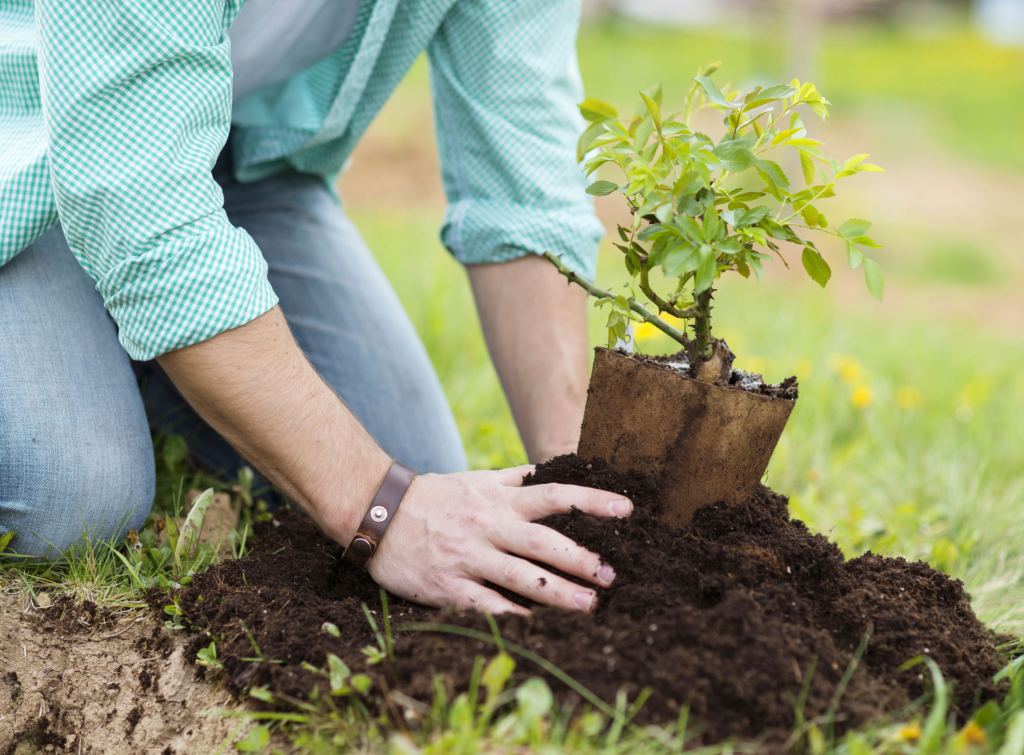
Changing Conditions for UK Trees
Climate projections for the UK suggest warmer, wetter winters and hotter, drier summers by the 2050s. These changes will stress many native species while potentially creating more favorable conditions for southern European species. Drought conditions, like those experienced in the summers of 2018 and 2022, can weaken trees’ natural defenses against pests and diseases.
You might have noticed changes in leaf emergence timing and autumn coloration periods—phenological shifts that indicate trees’ responses to changing climate conditions. Research from the UK Phenology Network shows that leaf emergence now occurs approximately two weeks earlier than in the 1950s.
Species Selection for Future Climates
Adopting a forward-thinking approach to tree planting is essential for creating resilient woodlands. The Forestry Commission recommends embracing the “right tree, right place, right purpose” principle, considering how climate conditions might change during a tree’s lifetime.
Species diversification represents a key strategy for increasing woodland resilience. By planting a mix of native species alongside climate-adapted non-natives, you can help ensure that some trees will thrive regardless of how climate conditions evolve. Trees like sweet chestnut, Italian alder, and Turkey oak may become more common components of the UK landscape as the climate changes.
The UK Forestry Standard (UKFS) provides guidance on climate adaptation for woodland managers, emphasizing the importance of genetic diversity within species. You can access the UKFS through the government website.
Urban Trees and Climate Resilience
Urban trees face particular challenges from climate change, including restricted rooting environments, higher ambient temperatures, and altered hydrology. Yet they play a crucial role in climate adaptation for cities, providing cooling through shade and evapotranspiration, reducing flood risk, and improving air quality.
Initiatives like the Urban Tree Challenge Fund support increased tree planting in towns and cities. If you’re involved in urban tree planting, consider factors such as drought tolerance, salt tolerance (for street trees exposed to winter de-icing), and resistance to pests and diseases when selecting species.
Community Action for Tree Protection
While legal frameworks and government initiatives are vital, community involvement often drives the most effective tree protection efforts. Your actions, both individually and collectively, can make a substantial difference.
Tree Wardens and Volunteer Networks
The Tree Warden Scheme, operated by The Tree Council, coordinates a network of over 8,000 volunteers across the UK who act as local champions for trees. Tree wardens monitor local trees, organize planting events, raise awareness, and advocate for tree protection in planning decisions.
Becoming a tree warden gives you a structured way to contribute to local tree conservation. The role is voluntary and requires no specific qualifications—just enthusiasm and commitment. You can find information about joining or establishing a local Tree Warden network through The Tree Council’s website.
Citizen Science and Tree Monitoring
Participation in citizen science projects allows you to contribute valuable data while developing your knowledge of trees. Initiatives like the Ancient Tree Inventory, managed by the Woodland Trust, rely on public contributions to map and monitor veteran and ancient trees across the UK. Other projects include:
- Observatree, which trains volunteers to identify and report tree pests and diseases
- The Nature’s Calendar phenology recording scheme, tracking seasonal changes in trees and other wildlife
- The Urban Tree Cover project, which maps tree canopy cover in urban areas
These projects provide accessible entry points for involvement in tree conservation, often requiring only basic training and a smartphone or computer to participate.
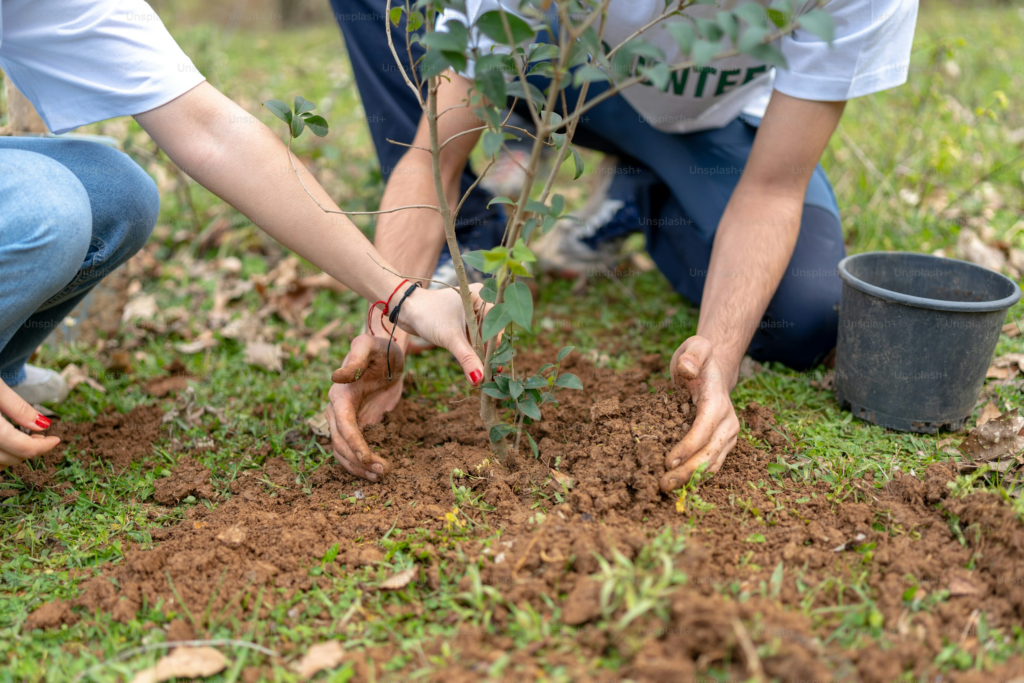
Local Campaigning for Tree Protection
When trees in your area face threats from development or neglect, organized community response can be highly effective. Successful campaigns often combine awareness-raising, political engagement, and strategic use of legal protections.
In Sheffield, for instance, community activism played a crucial role in challenging the council’s street tree felling program, ultimately leading to a revised approach with greater emphasis on tree retention. Similar campaigns across the UK have saved individual trees and entire woodlands from development.
If you’re concerned about trees in your area, consider forming or joining a local tree campaign group. Effective approaches include:
- Researching the legal status of threatened trees and applying for TPOs where appropriate
- Engaging with local councilors and planning departments
- Gathering evidence of trees’ ecological and community value
- Using social media and local press to raise awareness
- Exploring alternative design solutions that allow development while preserving trees
Practical Steps for Tree Protection on Your Property
Whether you own a small garden or manage extensive land, practical conservation measures can enhance tree health and longevity.
Proper Tree Planting Techniques
Successful tree establishment begins with appropriate planting. Research indicates that poor planting practices contribute to approximately 25% of young tree failures. Key considerations include:
- Season: The optimal planting time for most trees is late autumn to early spring (November to March), when trees are dormant and soil moisture levels are typically higher.
- Site preparation: Clear competing vegetation in a 1-meter radius around the planting site and prepare a hole approximately twice the width of the root ball but no deeper than the root ball height.
- Aftercare: Regular watering is crucial during the first two growing seasons, particularly during dry periods. A young tree typically requires 50 liters of water per week during dry spells.
For detailed guidance on tree planting, the Woodland Trust provides comprehensive resources on how to plant trees.
Protecting Mature Trees
Mature trees require different protection approaches than newly planted specimens. Their extensive root systems are particularly vulnerable to damage from construction activities, soil compaction, and level changes. Research by the Arboricultural Association suggests that up to 80% of construction-related tree damage occurs below ground.
If construction work is planned near mature trees, establishing a root protection area (RPA) is essential. This is typically calculated as a radius of 12 times the stem diameter for single-stemmed trees or an area equivalent to a circle with a radius of 12 times the stem diameter. Within this zone, activities such as excavation, soil compaction, storage of materials, and chemical spillage should be strictly controlled.
During drought conditions, even mature trees can benefit from supplemental watering, particularly if they’re showing signs of stress such as premature leaf drop or wilting. Water should be applied slowly to allow penetration to deeper root zones.
Tree Health Assessment and Maintenance
Regular health checks help identify potential issues before they become critical. You don’t need to be an arborist to conduct basic tree monitoring:
- Observe the canopy for dead or dying branches, abnormal leaf size or coloration, or thinning foliage
- Check the trunk for wounds, cracks, fungal growth, or unusual swellings
- Look for signs of pests, such as bore holes, webs, or abnormal defoliation
- Monitor the root zone for signs of disturbance, waterlogging, or fungal fruiting bodies
When issues are identified, consulting a qualified arborist is recommended. The Arboricultural Association maintains a directory of approved contractors and consultants who can provide expert advice and services.
Proper pruning, when necessary, should follow best practices to minimize stress and prevent disease entry. Different species have different optimal pruning times, but a general rule is to avoid pruning during the growing season (late spring to mid-summer) and during periods of extreme cold.
The Economics of Tree Protection
The financial aspects of tree conservation often influence decision-making at both policy and individual levels. Understanding the economic value of trees can strengthen the case for their protection.
Valuing Ecosystem Services
Trees provide numerous ecosystem services with quantifiable economic value. The Capital Asset Valuation for Amenity Trees (CAVAT) system and i-Tree Eco tool offer methodologies for calculating these values. According to i-Tree assessments, London’s trees provide ecosystem services worth £132.7 million annually, including:
- £95 million in air pollution removal
- £4.6 million in carbon storage
- £3.1 million in reduced stormwater runoff
- £30 million in energy savings through temperature regulation
These figures help demonstrate that tree protection represents not just an environmental choice but a sound economic investment. For every £1 spent on tree planting and maintenance in urban areas, studies suggest a return of £4.50 to £8 in ecosystem services.
Grant Funding for Tree Protection
Various funding schemes exist to support tree planting and protection initiatives. The table below outlines some key funding sources available in the UK:
| Funding Scheme | Provider | Target Recipients | Typical Funding Range | Application Period |
|---|---|---|---|---|
| Countryside Stewardship Woodland Creation Grant | Forestry Commission/Natural England | Landowners, farmers | £1,600-£8,500 per hectare over 10 years | Year-round |
| Urban Tree Challenge Fund | Forestry Commission | Local authorities, community groups | £10,000-£1 million | Annual calls, typically spring |
| Local Authority Treescapes Fund | Forestry Commission | Local authorities, partnerships | £50,000-£300,000 | Annual calls |
| Woodland Creation Planning Grant | Forestry Commission | Landowners planning larger woodlands | Up to £30,000 | Year-round |
| Community Orchards Scheme | Various local providers | Community groups | £500-£5,000 | Varies by provider |
To access these funds, you’ll typically need to develop a clear project plan demonstrating adherence to the UK Forestry Standard and articulating the expected environmental and social benefits. For larger projects, demonstrating community engagement and long-term management commitment strengthens applications.
Trees and Property Value
Research consistently shows that trees enhance property values. A study by the Royal Institution of Chartered Surveyors found that properties with mature trees in their vicinity commanded a premium of 5-18% compared to similar properties without trees. Street trees appear particularly valuable, with London research indicating that a 10% increase in street tree density correlates with a 1.5% increase in property prices.
For homeowners, this suggests that preserving mature trees on your property represents not just environmental stewardship but also financial prudence. When selling a property, estate agents increasingly highlight mature gardens and trees as selling points, particularly for family homes.
Future Directions in UK Tree Protection
As we look toward the future, several emerging trends and initiatives show promise for enhancing tree protection across the UK.
The England Trees Action Plan
Launched in 2021, the England Trees Action Plan outlines the government’s strategy for tree planting and protection through 2025 and beyond. Key commitments include:
- Tripling woodland creation rates in England to 7,000 hectares per year by May 2024
- Establishing at least three new Community Forests
- Creating a new category of Long-Established Woodland to complement Ancient Woodland protection
- Introducing a new Forestry Act to empower the Forestry Commission
This ambitious plan represents a significant policy shift toward recognizing trees’ role in addressing climate change and biodiversity loss. You can find details on the government’s progress toward these goals on their England Trees Action Plan page.
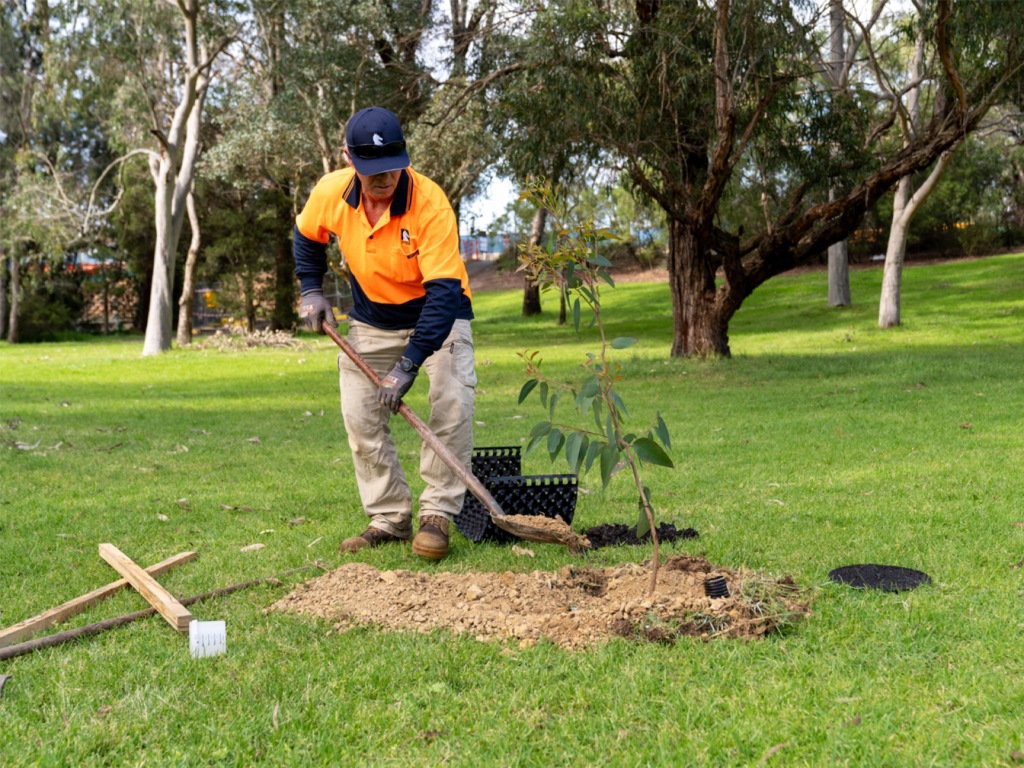
Technological Innovations in Tree Monitoring
Advances in technology are transforming tree monitoring and management approaches. Satellite imagery and LiDAR (Light Detection and Ranging) data now enable detailed mapping of tree cover across large areas, helping identify both loss hotspots and planting opportunities. The UK Centre for Ecology & Hydrology has developed the UK Land Cover Maps, which provide national-scale data on woodland distribution and change.
At the individual tree level, acoustic tomography, thermography, and electrical resistance tomography offer non-invasive methods for assessing internal tree health, potentially identifying issues before visible symptoms appear. These technologies remain primarily within the professional arboricultural domain but may become more accessible to community groups and individuals as costs decrease.
Mobile applications increasingly support citizen involvement in tree monitoring. Apps like TreeTalk, TreezUK, and Curio allow users to identify, map, and record information about trees in their neighborhoods, contributing to broader understanding of urban tree populations.
Integrated Land Management Approaches
Recognition is growing that tree protection cannot be addressed in isolation from broader land use considerations. Integrated approaches such as agroforestry—combining trees with agricultural production—offer promising models for increasing tree cover while maintaining food production.
The UK Agroforestry Network promotes systems such as silvopasture (trees with livestock) and silvoarable (trees with crops), which can deliver multiple benefits including carbon sequestration, improved animal welfare, soil health enhancement, and diversified farm income. Government support for agroforestry is increasing, with options now included within the Sustainable Farming Incentive.
Similarly, natural flood management schemes increasingly incorporate strategic tree planting to slow water movement across landscapes, reducing downstream flood risks while creating wildlife habitats. Projects like “Slowing the Flow” at Pickering, North Yorkshire, demonstrate how tree planting in appropriate locations can form part of cost-effective flood prevention strategies.
Conclusion: Your Role in Safeguarding the UK’s Arboreal Heritage
Throughout this exploration of tree protection in the UK, we’ve examined the legal frameworks, ecological challenges, community initiatives, and practical steps that contribute to tree conservation efforts. The complexity of the task might seem overwhelming, but meaningful progress results from the cumulative impact of individual and community actions.
You have multiple pathways to contribute to tree protection, regardless of your circumstances. Whether you’re planting trees in your garden, volunteering with conservation organizations, reporting suspected tree diseases, advocating for stronger protections, or simply raising awareness, your involvement matters.
The UK’s trees face unprecedented challenges from climate change, development pressures, and emerging pests and diseases. Yet there are also unprecedented opportunities in the growing recognition of trees’ value for carbon sequestration, biodiversity support, and human wellbeing. Government commitments to increase tree planting, technological advances in tree monitoring, and rising public awareness all create a potentially favorable context for enhanced tree protection.
As you consider how to engage with tree protection efforts, remember that every action contributes to a larger movement. By understanding trees not merely as amenities but as essential ecological infrastructure, you help shift the conversation toward more sustainable approaches to landscape management.
The ancient oak standing in your local park, the street trees lining your commute route, the woodland where you walk at weekends—all these trees connect us to our past and, with proper protection, will contribute to a more resilient future. Their protection is not just an environmental responsibility but a cultural one, preserving living links to our landscape heritage for generations yet to come.
For more information on tree protection initiatives and how you can get involved, visit the Forestry Commission website or connect with organizations like the Woodland Trust, Trees for Cities, or your local Tree Warden network.
This article is for informational purposes only and does not constitute legal advice. Regulations regarding tree protection vary by local authority and may change over time. Always consult with relevant local authorities and qualified professionals when dealing with protected trees.



